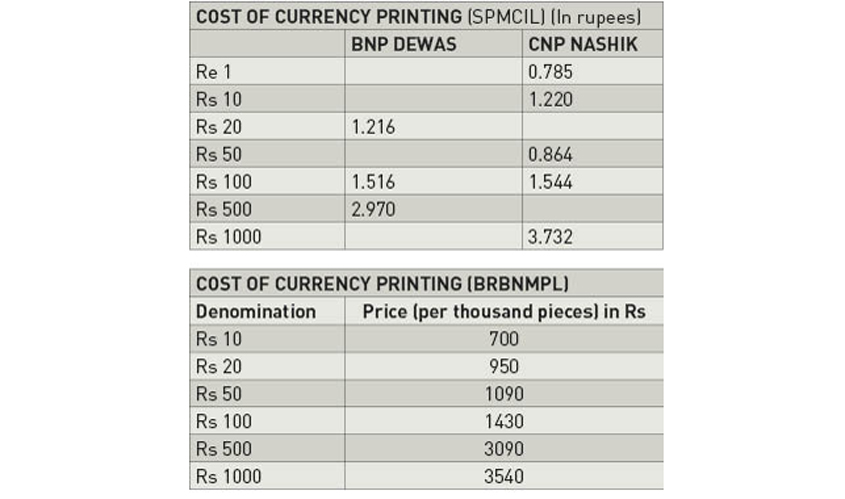Printing a note of Rs 10 costs between 70 paise and Rs 1.12 to the state exchequer, while printing a Re 1 note costs 78.5 paise.
According to an RTI reply, different public sector undertakings have different printing costs and sale price for the currency notes. While the Reserve Bank of India (RBI) owned Bhartiya Reserve Bank Note Mudran Private Limited (BRBNMPL) prints the notes of Rs 10 and Rs 20 at a cost of 70 paise and 95 paise respectively, the units of Central government-owned Security Printing & Minting Corporation of India Limited (SPMCIL) charges Rs 1.22 and Rs 1.21 respectively.
The RTI was filed by activist Subhash Chandra Agarwal. In his RTI petition, Agarwal had also sought information regarding the steps taken by the government to reduce the cost of printing of notes. While the SPMCIL replied that its corporate office does not have the required information and directed the query to Currency Note Press (CNP), Nashik and the Bank Note Press, Dewas.
On the other hand, BRBNMPL did not furnish the information, saying that the cost of printing bank notes cannot be provided since it is considered as exempted information which comes under the ambit of Section 8 (1)(a) of the RTI Act.
Agarwal said it is surprising that different public sector undertakings have different printing costs of currency notes. “Besides Rs 1 and Rs 10, there is a big difference in the price-structure of notes of other denominations. The Centre should study how the cost of currency printing by SPMCIL is much higher than that of BRBNMPL,” Agarwal said.
However, what is interesting is the fact that the cost of printing one-rupee note has been reduced to 78.5 paise from Rs 1.14 by the units of SPMCIL. According to Agarwal, the Centre should reduce the size of the currency notes in order to save currency printing. “It was last reduced in April 1967. Also, further printing and issuing of one-rupee notes reissued in March last year after a gap of 20 years should be discontinued with existing stocks sold as souvenir in plastic packs through all bank branches, RBO office and post-offices,” he added.

